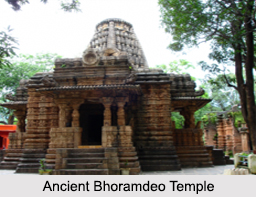 Chhattisgarh is a state in central India. Though Chhattisgarh was recognized as an independent state on 1st November in 2000, the place finds its mention in Hindu epics like Ramayana and Mahabharata. The state was earlier a part of Madhya Pradesh, another state in central India.
Chhattisgarh is a state in central India. Though Chhattisgarh was recognized as an independent state on 1st November in 2000, the place finds its mention in Hindu epics like Ramayana and Mahabharata. The state was earlier a part of Madhya Pradesh, another state in central India.
There is an interesting story explaining the origin of the name of Chhattisgarh. According to the British Chronicler, J.B. Beglar, "the real name is Chhattisghar and not Chhattisgarh". According to tradition, ages ago during the time of Jarasandha, thirty-six families of Dalits emigrated southwards from Jarasandha`s kingdom and established themselves in country, which after them is called Chhattisgarh.
Chhattisgarh has been the centre of cultural development since Vedic times and it further accentuated during the epic era. The place has been attacked by Marathas for many years until they annexed it from Gond tribes. It was again attacked by Pindaris during the 19th century and finally surrendered over to the British
.
Ancient history of Chhattisgarh
In ancient India, Chhattisgarh was known as Dakshina Kosala. The region has its mention in epics like Ramayana and Mahabharata. From an archeological excavation at a place called Malhar, a Vishnu statue of shunga period highlights the fact that the region was inhabited by humans in ancient times.
Medieval history of Chhattisgarh
Further excavations establish the fact that Chhattisgarh was ruled by valorous dynasties in the past like Sharabhpurias, Panduvanshis, Somavanshi, Kalachuri and Nagavanshi. Resemblance from the architecture of ancient monuments and historical data derived from manuscripts states that the Bastar region was a dominant of Chola dynasty of south India. Rajendra Chola I and Kulothunga Chola I invaded the place several times.
Chhattisgarh was ruled by the Marathas for over 100 years from 1741 to 1845 AD. Bhonsles of Nagpur dominated the place until it was acquired by the British Empire.
Modern history of Chhattisgarh
Chhattisgarh came under British rule in 1845 AD and lasted till the independence of India in 1947. In British India, the place became Chhattisgarh division under central province. In 1854, when the province of Nagpur lapsed to the British government, Chhattisgarh was formed into a deputy commissionership with its headquarters at Raipur.

The British made changes in the administrative and revenue systems of Chhattisgarh, which affected the people of Chhattisgarh. The British were resisted by the tribes which lasted nearly five years. In 1857, the Sepoy Mutiny was organized by Vir Narain Singh who was a Jamindar of Sonakhan. He formed an army of 500 men to crush the British. He was later arrested and was hanged on the 10th December, 1857. He became the first martyr from Chhattisgarh. The people of Chhattisgarh remember him with pride.
In 1904 Sambalpur district was relocated to Odisha and estates of Surguja were shifted from Bengal to Chhattisgarh. Chhattisgarh was carved out of Madhya Pradesh and came into existence on 1 November 2000.
Separation of Chhattisgarh from Madhya Pradesh
Chhattisgarh was part of the Indian state of Madhya Pradesh until November, 2000. The demand for an independent state was first raised in 1924 by "Raipur congress. Several attempts has been put forward since then in the form of petition, marches, rallies, forum, seminars, public meetings etc. After much rejection, National Democratic Alliance (NDA) government sent the redrafted Separate Chhattisgarh Bill for the approval of the Madhya Pradesh Assembly, where it was unanimously approved. The bill was passed in both Lok Sabha and Rajya Sabha. The President of India consented to the Madhya Pradesh Reorganisation Act 2000 on 25 August 2000. Subsequently on 1 November 2000 Chhattisgarh became an independent state.



















